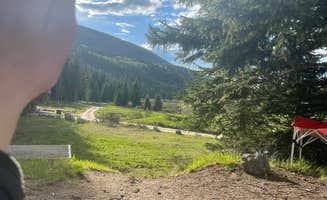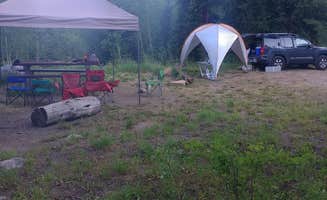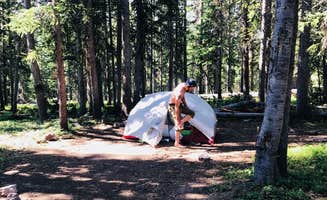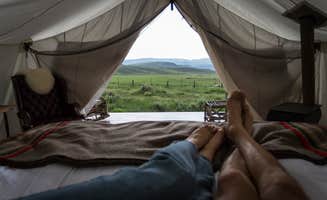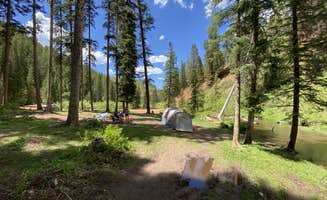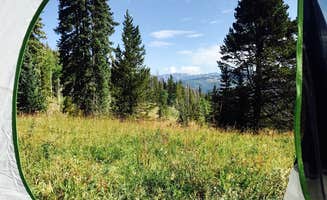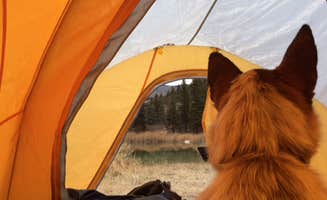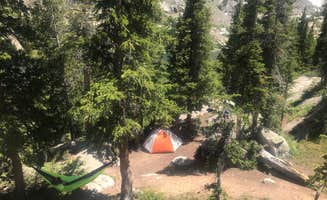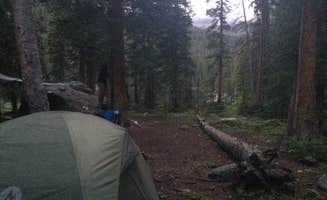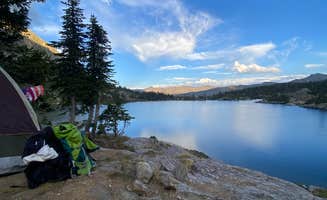Dispersed camping options near Edwards, Colorado range from primitive sites to established campgrounds along forest service roads. At elevations between 8,000-10,000 feet, camping in the White River National Forest requires preparation for variable weather conditions. Forest service road access typically opens by late May, with most sites accessible until mid-October when snow begins to accumulate.
What to do
Hiking to alpine lakes: Access high-elevation lakes from the Halfmoon Campground, located near Minturn, CO. "Halfmoon campground is about 30 minutes from the town of Minturn, up Tigiwon Road, and a great jump off spot to many hikes; Notch Mountain, Mount of the Holy Cross, Tuhare and Lake Constantine as well as a few others. All of those spots offer great fishing, hiking and backpacking areas," notes Anthony P.
Stream access for fishing: The Gold Park Campground provides direct creek access. According to Jax B., "Outstanding camping experience. Small campground on the river with plenty of trees for relaxing in nature. The grounds were clean and organized and the camp host, Doug, was exceptional. Highly recommended. Stay here and you'll be ~1 mile from the start of the Missouri Lakes hike. One of CO's best."
Wildlife watching opportunities: Early morning and evening hours offer the best chances for spotting local wildlife. "We were able to secure a great spot on a hill overlooking the valley. In the morning we were treated to a herd of elk crossing the creek," reports Lord of A. about their experience at Yeoman Park.
What campers like
Distance from highways: Sites farther from I-70 provide quieter experiences with fewer disruptions. At Yeoman Park, campers appreciate the remote setting. "Totally delighted with our stay here. Well maintained camp sites and gorgeous surroundings. The majority of spots in the camp loop we stay in were full yet it was so calm and quiet at night," Joy D. explains.
Accessibility to towns: Many camping areas provide relative seclusion while remaining within practical distance of supplies. At Halfmoon Campground, this balance is evident: "This park has tons of character... The staff is really sweet and willing to help in any way they can. We lost our pump for our inflatable and they found us one to borrow," shares Hayley K.
Water proximity: Creekside sites are highly sought after for both ambiance and practical uses. "This campsite is usually full so when I was able to get a spot I was pretty happy. $10 a night to be right in the river. I did a cold plunge into the river the second we got there. Slept great with the sounds of the river," says Keewi W. about Wolcott Campground.
What you should know
Road conditions: Access roads to dispersed camping areas often require high-clearance vehicles, especially early or late in the season. At Red Sandstone, visitors warn about challenging terrain: "Road was REALLY rough. One portion looked like someone had just run around digging random holes in the road; however, once you got past the road, it was everything you'd want in a primitive site," notes Rhonda C.
Temperature fluctuations: Even in July and August, temperatures frequently drop below 45°F at night. Pack adequate sleeping gear for unexpected cold fronts. As one camper explains about Gold Park Campground, "Definitely far from help so bring some bear spray because we would see some recent bear activity and no cell service."
Fire restrictions: Current fire regulations should be checked before trips. Yeoman Park campers note: "My husband and I stayed 1 night at Yeoman and it was nothing short of wonder, joy and fun! There was a park ranger on site at the time we were there so that provided a sense of security while being more in the back country."
Tips for camping with families
Look for educational programs: Some campgrounds offer ranger-led activities during summer months. At Yeoman Park, "Wildlife dept offers educational entertainment on Saturday evenings at their tiny amphitheater. Great for children," according to Ladawn S.
Scout safe water play areas: Creeks and lakes offer natural entertainment for children. "The camp host is super nice and keeps a great campsite. The pit toilet was clean and did not smell. My 8 year old actually said it was the best one she saw all week and for a newbie camper on her first trip that says a lot! We loved this site because we were able to hike along the creek and sit on the boulders and watch the fly fisherman," reports Andrea S. about Gold Park.
Plan for insect protection: Higher moisture areas near streams can harbor mosquitoes. "Lots of bugs! Bring bug spray!" warns Amber M. about Red Sandstone. Another camper adds, "SO MANY MOSQUITOS," emphasizing the importance of proper preparation.
Tips from RVers
Site selection for larger vehicles: Most dispersed sites work best for smaller rigs or tent camping. At Bellyache Road, Steve M. advises, "Absolutely requires four-wheel drive for two and a half miles of extremely rough unpaved road that goes up a thousand feet. I don't regret bringing my travel trailer up here because it's meant rough roads but had I known the road was this rough I wouldn't have started."
Water access planning: No hookups means careful water management. At Wolcott Campground, the proximity to water can be helpful: "It's $10/night or day use, self pay, no host, no reservations. There are handicap accessible non gendered vault toilets and a dumpster in the day use area."
Road width limitations: Forest roads rarely accommodate turning around with larger trailers. "Definitely would advise 4x4, and not for travel trailers at all. Bringing one up could lead to a serious situation, since there are no places to turn around whatsoever," warns Adam D. about Bellyache Road camping.


